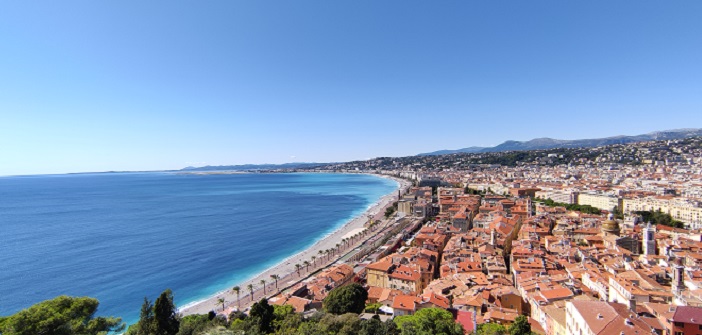
The Metropolitan Council has deliberated the final administrative act before the UNESCO Council’s decision under the title “Nice, the Winter Resort City of the Riviera.”
In his presentation, Christian Estrosi traced the origin and the journey of this application, which would offer Nice and its territory global cultural recognition in addition to the tourist appeal it is already known for.
The aim of this application is the vast part of the city, covering an area of 522 hectares, which has developed almost exclusively by and for tourism, with its regulated urban planning stemming from the “Consiglio d’Ornato,” an embellishment council established in 1832 by the King of Piedmont-Sardinia, its green spaces planted with exotic species, its promenades led by the emblematic Promenade des Anglais, its leisure heritage reflecting influences from around the world, with its villas, hotels, palaces, “palazzi,” holiday apartments, buildings showcasing its cosmopolitanism and even its places of worship, whether Orthodox, Anglican, Episcopalian, Protestant, Jewish, or Catholic.
This urban ensemble constitutes, by its uniqueness, quality, and the richness of the cosmopolitan influences that have shaped it, a heritage of the highest order.
It includes the entire waterfront (Promenade des Anglais, Quai des États-Unis, Terrasse des Ponchettes designed in the 18th century to offer the spectacle of the sea), surpasses Rauba-Capeu at the foot of Castle Hill, crosses the port, includes Mont Boron, the hills of Cimiez and Baumettes (which form the amphitheater facing the sea, characteristic of Riviera cities) and takes into account the vast regulated urban space bounded to the north by the railway line and to the south by the Promenade des Anglais, with some extensions, including the Russian Orthodox cathedral.
“This is why I propose you adopt the creation of the Area of Enhancement of Architecture and Heritage on the Promenade des Anglais and the north districts possessing architectural heritage related to winter tourism and the beginning of summer tourism,” concluded the metropolitan president. On January 13, 2020, the French government decided to submit Nice’s candidacy for inscription on the UNESCO World Heritage List.
This application will be examined by the UNESCO World Heritage Committee during its July 2021 session.
On an exceptional site, between sea and mountains, a new and cosmopolitan city has formed from a pre-existing urban core, whose development, between 1760 and 1950, was determined by the function of resort.
In May 2021, the international experts commissioned by UNESCO issued their final evaluation report, recognizing that Nice indeed presents an Outstanding Universal Value and recommending its inscription, provided the site is protected by a specific heritage urban planning regulation (AVAP), enforceable before the inscription on the World Heritage List.
This AVAP procedure was initiated as early as February 19, 2016, by unanimous resolution of our Metropolitan Council, covering the area of the UNESCO application. It constitutes a servitude that will impose on the metropolitan PLU for the heritage aspects.
The inscription of Nice on the World Heritage List, along with the AVAP, will allow for better appreciation of the leisure heritage. This protection in no way freezes the identified buildings but aims to closely study each proposed transformation, for perfect integration into the surrounding built environment. It illustrates that the protection of heritage does not prohibit requalifications.